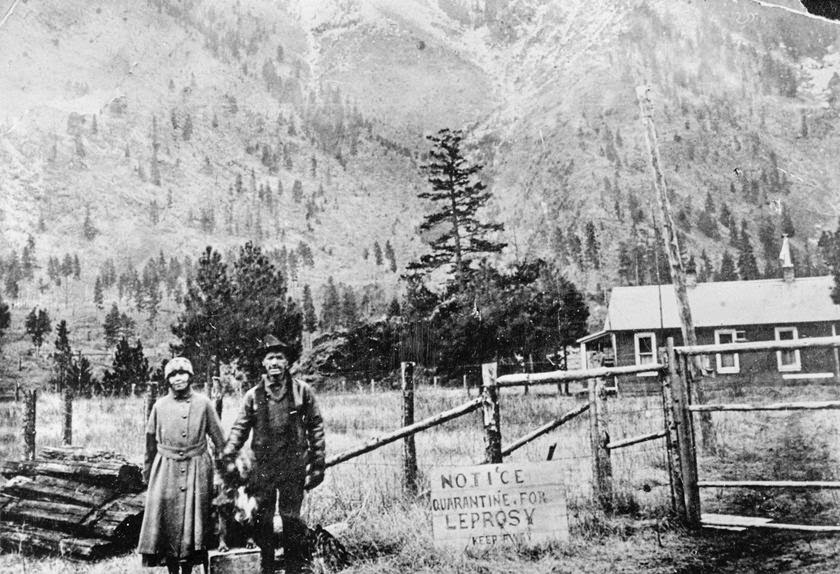Orville .G. Willett was an army veteran, a state senator, and the person who suggested the name for Mineral County. He was also the victim of a dreaded disease. Willett had suffered undiagnosed bouts of illness for years, but while serving in the legislature in 1917, the Mayo Clinic finally determined the cause. Willett had leprosy. He had become infected while serving his country during the Spanish American War in the Philippines in 1902. He was one of some two hundred veterans of this war to contract the disease.
 |
Willett posed for this legislative portrait just months before his diagnosis.
Montana Historical Society Photograph Archives, 945-620 |
The State of Montana had no rules and regulations in place for the isolation and quarantine of lepers. It was a mysterious disease, believed to be a fatal and highly contagious. The Alberton community was horrified to learn of the Willetts’ troubles. Willett and his wife were newly married. The couple was placed under quarantine in a small cottage in rural Mineral County near Alberton and cared for at county expense. Willett refused to submit to painful chalmoogra oil treatments, which doctors at that time believed was a viable cure. Instead he resorted to faith healing as his health deteriorated.
Ten years later in 1927, a legislative act committed Willett—who had continued to refuse medical treatment—to the federal leprosarium at Carville, Louisiana. Although local residents had been supportive of the Willetts, arsonists wasted little time after their departure for Louisiana. Their house and all their possessions burned to the ground. Doctors at Carville were hopeful that Willett would benefit from chalmoogra oil treatment. The disease had not disfigured him, but it was far advanced. Despite treatment, Willett died in 1928.
Today, Carville, Louisiana, is still a center for the study of leprosy, or Hansens’s Disease. Undamaged by Hurricane Katrina, research was disrupted while the facility served as the identification center for 910 victims of the storm.


No comments:
Post a Comment